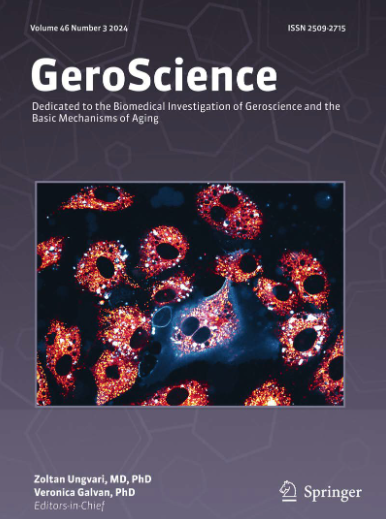Effects of whole-body vibration on cognitive function: a systematic review and meta-analysis.
IF 5.4
2区 医学
Q1 GERIATRICS & GERONTOLOGY
引用次数: 0
Abstract
Whole-body vibration exercise (WBV) is a low-intensity intervention for improving cognitive function, particularly among individuals who are older or have physical limitations. However, quantitative evidence regarding its effectiveness is limited. This meta-analysis aimed to quantify the effects of WBV on cognitive function and explore major moderating variables and differences across cognitive domains. Sixteen randomized controlled trials (RCTs) were included, yielding 37 effect sizes (Hedges' g) related to cognitive outcomes. Effect sizes were estimated for overall cognitive function and four subdomains: global cognition, executive function, attention, and memory. A meta-regression analysis was conducted to assess the influence of potential moderators, including vibration frequency, intensity, posture, and intervention duration. WBV had a small but statistically significant positive effect on overall cognitive function (Hedges' g = 0.375, 95% CI = [0.263, 0.486], p < .001). Effect sizes were greatest for global cognition (g = 0.55), followed by executive function (g = 0.41), attention (g = 0.28), and memory (g = 0.28). Meta-regression analysis revealed that most of the moderating variables were not significant. The total intervention dose was the only significant moderator (p = .041). This meta-analysis revealed that WBV is associated with meaningful improvements in cognitive function and that the benefits may be greater among populations with cognitive impairment. WBV may be clinically applicable as a low-intensity, accessible cognitive intervention for older adults and individuals with physical limitations. Future research should investigate the relationships between cognitive domain-specific responses and physiological indicators and develop tailored intervention strategies based on age and cognitive status.Registration: PROSPERO CRD420251067063.全身振动对认知功能的影响:系统回顾和荟萃分析。
全身振动锻炼(WBV)是一种低强度的干预,用于改善认知功能,特别是对老年人或有身体限制的个体。然而,关于其有效性的定量证据有限。本荟萃分析旨在量化WBV对认知功能的影响,并探索认知领域的主要调节变量和差异。纳入16项随机对照试验(rct),产生37种与认知结果相关的效应量(Hedges' g)。评估了整体认知功能和四个子领域的效应量:整体认知、执行功能、注意力和记忆。采用meta回归分析评估潜在调节因子的影响,包括振动频率、强度、姿势和干预持续时间。WBV对整体认知功能有较小但有统计学意义的积极影响(Hedges' g = 0.375, 95% CI = [0.263, 0.486], p < .001)。整体认知的效应量最大(g = 0.55),其次是执行功能(g = 0.41)、注意力(g = 0.28)和记忆(g = 0.28)。元回归分析显示,大部分调节变量不显著。总干预剂量是唯一的显著调节因子(p = 0.041)。该荟萃分析显示,WBV与认知功能有意义的改善有关,并且在认知障碍人群中获益可能更大。WBV可能在临床上适用于老年人和有身体限制的个体,作为一种低强度、容易获得的认知干预。未来的研究应探讨认知领域特异性反应与生理指标之间的关系,并根据年龄和认知状况制定有针对性的干预策略。注册号:PROSPERO CRD420251067063。
本文章由计算机程序翻译,如有差异,请以英文原文为准。
求助全文
约1分钟内获得全文
求助全文
来源期刊

GeroScience
Medicine-Complementary and Alternative Medicine
CiteScore
10.50
自引率
5.40%
发文量
182
期刊介绍:
GeroScience is a bi-monthly, international, peer-reviewed journal that publishes articles related to research in the biology of aging and research on biomedical applications that impact aging. The scope of articles to be considered include evolutionary biology, biophysics, genetics, genomics, proteomics, molecular biology, cell biology, biochemistry, endocrinology, immunology, physiology, pharmacology, neuroscience, and psychology.
 求助内容:
求助内容: 应助结果提醒方式:
应助结果提醒方式:


